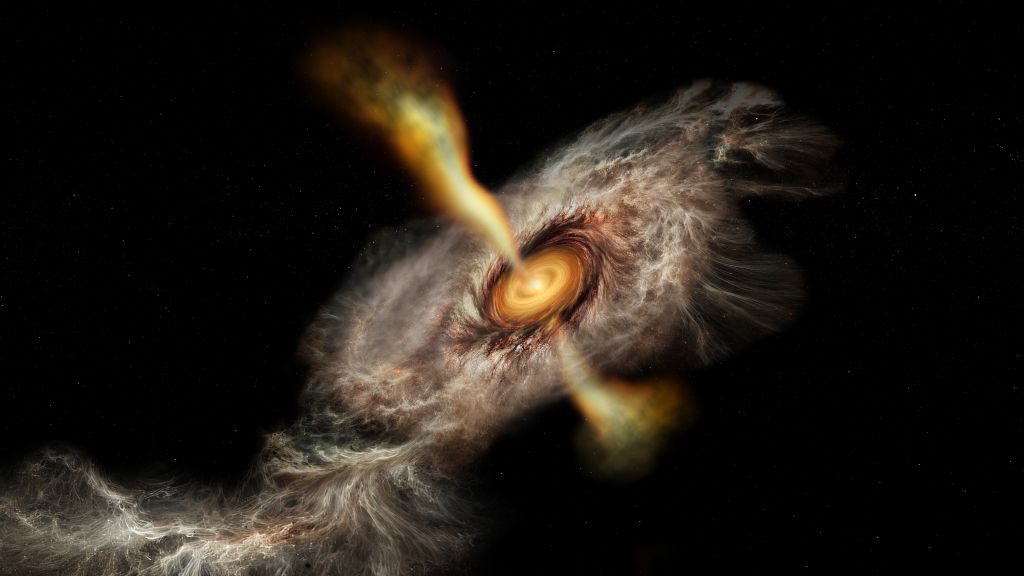This star devours two Jupiters per year 🌟
Follow us on Google News (click on ☆)

Artist's impression of ammonia gas falling into the accretion disk feeding the young massive star HW2.
Credit: NSF/AUI/NSF NRAO/B. Saxton
Located about 2,300 light-years from Earth in the star-forming region Cepheus A, HW2 is a developing star, 10 to 20 times more massive than our Sun. Researchers have managed to pierce the thick veil of dust surrounding this star to study the gas fueling its rapid growth.
Using radio observations of ammonia, a molecule abundant in interstellar space, astronomers have mapped the rotating disk of gas and dust around HW2. These findings, soon to be published in Astronomy & Astrophysics, confirm that massive stars grow in the same way as their smaller counterparts.
The team used the Very Large Array radio telescope network in New Mexico for these observations. By tracking the signature of ammonia molecules, they were able to see through the dense dust and get as close as possible to the star. The data reveal that the gas is collapsing inward at a dizzying speed.
HW2's growth rate is one of the highest ever recorded, equivalent to about two Jupiter masses per year. This discovery raises questions about how the star's immediate environment influences its evolution. The observations show an asymmetric distribution of gas in the accretion disk.
This asymmetry could indicate that the disk is receiving an external injection of matter, possibly channeled by a nearby filament of gas and dust. This hypothesis aligns with growing evidence that such filaments can connect young stars to their surroundings, acting as cosmic supply lines.
Although researchers cannot yet directly image these filaments, the study offers testable predictions for future observations. Understanding how long HW2 can continue to grow is a key question for astronomers.
Next steps include more detailed observations to confirm the presence of these filaments and better understand their role in the formation of massive stars. This research could shed light on the universal processes of star formation.
How do massive stars form?
Massive stars, like HW2, form from collapsing clouds of gas and dust under their own gravity. Unlike smaller stars, their formation is less well understood due to their rarity and short lifespans. The process involves the accretion of matter from a surrounding disk, which fuels the star's growth.
Massive stars reach extreme internal temperatures and pressures, triggering intense nuclear reactions. This makes them much brighter and hotter than stars like our Sun.
Their rapid formation and violent evolution have major implications for galaxy dynamics, influencing the formation of other stars and the distribution of heavy elements in the Universe once they explode as supernovae.
What is the role of accretion disks in star formation?
Accretion disks are key structures in star formation, acting as reservoirs of matter that feed the growth of the central star. They form when gas and dust organize into a flat, rotating disk around the young star.
These disks allow matter to gradually lose energy and fall toward the star, rather than collapsing directly. This process enables stable and continuous growth.
In the case of massive stars, accretion disks must handle much larger flows of matter, which can lead to asymmetries and instabilities. These features provide clues about the extreme conditions of their formation.
Accretion disks are also the birthplace of planets around smaller stars, demonstrating the universal importance of these structures in astrophysics.